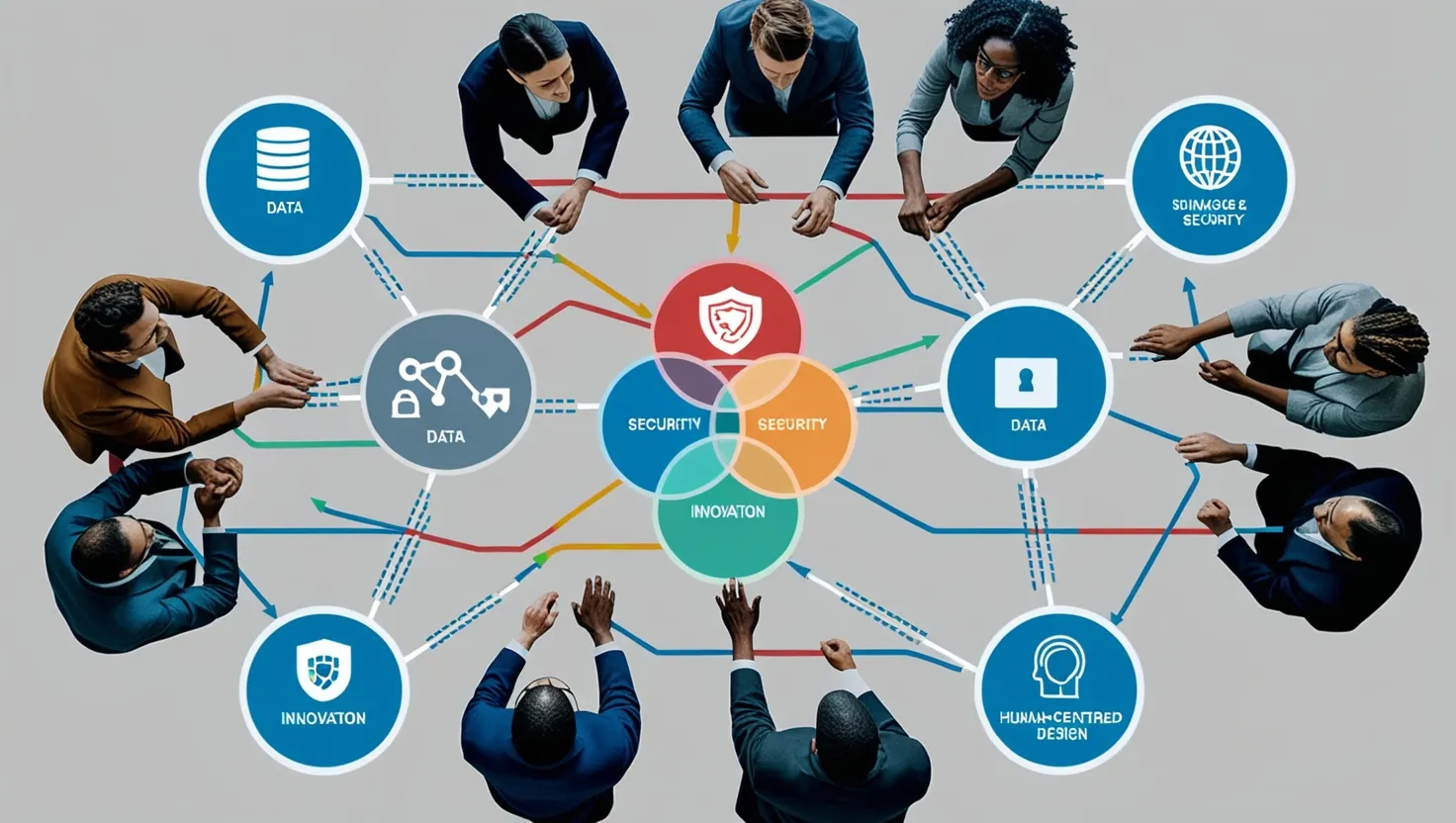Leading an organization through digital transformation is a daunting task, filled with challenges that can test even the most seasoned leaders. However, with the right strategies and a clear vision, it’s possible to not only survive but thrive in this rapidly evolving landscape.
Developing a Clear Digital Vision
The journey begins with a clear digital vision. This isn’t just about adopting the latest technology; it’s about understanding how digital transformation can fundamentally change your business model, processes, and culture. As a leader, you need to paint a vivid picture of what the future looks like and how digital transformation will get you there. This vision should be communicated clearly and consistently across the organization, ensuring everyone is aligned and motivated towards the same goals.
Embracing a Data-Driven Decision-Making Culture
Data is the lifeblood of any digital transformation. It provides the insights needed to make informed decisions, drive innovation, and optimize operations. Building a data-driven culture means encouraging a mindset where data is at the heart of every decision. This involves investing in data analytics tools, training employees to interpret and act on data, and creating an environment where experimentation and learning from failure are encouraged. When decisions are backed by solid data, you reduce the risk of missteps and increase the likelihood of success.
Prioritizing Cybersecurity and Data Privacy
As you delve deeper into digital transformation, the amount of data you handle grows exponentially, and so do the risks. Cybersecurity and data privacy are no longer optional; they are essential components of your digital strategy. Protecting sensitive information from cyber threats is crucial for maintaining trust with customers, partners, and regulators. This involves implementing robust security measures, such as encryption, data classification, and privacy-preserving techniques. It’s also important to stay compliant with stringent regulations like GDPR and CCPA, ensuring that data flows securely across systems and borders.
Fostering Digital Literacy Across All Levels
Digital literacy is not just for the IT department; it’s a skill that every employee needs to possess. As a leader, you should invest in training programs that help your team understand and use digital tools effectively. This includes everything from basic computer skills to advanced data analytics and cloud computing. A digitally literate workforce is more adaptable, innovative, and capable of driving change within the organization.
Encouraging Experimentation and Rapid Prototyping
Innovation thrives in an environment where experimentation is encouraged and failure is seen as a learning opportunity. Rapid prototyping allows you to test ideas quickly and iterate based on feedback. This approach not only speeds up the innovation process but also fosters a culture of creativity and continuous improvement. By giving your team the freedom to experiment, you open up new avenues for growth and innovation that might otherwise remain unexplored.
Building Cross-Functional, Agile Teams
Digital transformation often requires breaking down silos and building cross-functional teams that can work seamlessly together. These teams should be agile, able to adapt quickly to changing circumstances and technological advancements. By combining diverse skill sets and perspectives, you create a dynamic that fosters collaboration, innovation, and problem-solving. This approach ensures that your organization remains nimble and responsive to the ever-evolving digital landscape.
Investing in Continuous Learning and Upskilling
The pace of technological change is relentless, and to keep up, your team needs to be constantly learning and upskilling. As a leader, you should prioritize continuous learning, providing opportunities for professional development and staying abreast of the latest trends and technologies. This not only helps your team stay relevant but also ensures that your organization remains competitive in a rapidly changing market.
Balancing Technology Adoption with Human-Centered Design
In the rush to adopt new technologies, it’s easy to forget the human element. However, successful digital transformation is not just about technology; it’s about how that technology enhances the human experience. Human-centered design ensures that the solutions you implement are intuitive, user-friendly, and meet the real needs of your customers and employees. By balancing technology adoption with a focus on human needs, you create a more sustainable and meaningful transformation.
Overcoming Resistance to Change
Resistance to change is a natural part of any transformation process. Employees may fear the unknown, worry about job security, or simply prefer the status quo. As a leader, it’s your job to address these concerns head-on. Clear communication about the reasons behind the transformation and the benefits it will bring can go a long way in alleviating fears. Providing adequate training and support also helps employees feel more comfortable with the changes.
Addressing Skill Gaps
Digital transformation often highlights skill gaps within the organization. As new technologies emerge, existing skills may become obsolete, and new ones become essential. Identifying these gaps early and investing in the right training programs can help bridge them. This might involve hiring new talent or upskilling existing employees. By addressing skill gaps proactively, you ensure that your team has the capabilities needed to drive the transformation forward.
Managing Technological Disruption
Technological disruption can be both an opportunity and a challenge. On one hand, it offers the potential for innovation and growth; on the other, it can disrupt existing processes and business models. As a leader, you need to be agile and adaptable, able to pivot quickly in response to new technologies and market trends. This involves staying informed about emerging technologies and their potential impact on your industry.
Maintaining a Human Touch
In an increasingly digital world, it’s easy to lose sight of the human touch. However, this is precisely what sets successful organizations apart. By focusing on human-centered design and ensuring that technology enhances rather than replaces human interaction, you create a more meaningful and sustainable transformation. This might involve using technology to personalize customer experiences, improve employee engagement, or simply make interactions more intuitive and user-friendly.
Examples of Successful Digital Transformations
Across various industries, there are numerous examples of successful digital transformations. In retail, companies like Amazon have revolutionized the shopping experience through e-commerce and personalized recommendations. In healthcare, digital health platforms have improved patient outcomes by providing real-time data and remote monitoring capabilities. In manufacturing, Industry 4.0 technologies have enhanced efficiency and productivity through automation and data analytics.
Each of these transformations started with a clear vision, a commitment to data-driven decision-making, and a focus on human-centered design. They also involved significant investments in digital literacy, cybersecurity, and continuous learning. By following these strategies, leaders can guide their organizations through the complexities of digital transformation and emerge stronger, more innovative, and more competitive.
In the end, leading through digital transformation is not just about adopting new technologies; it’s about creating a culture that is adaptable, innovative, and human-centered. By focusing on these key strategies, you can ensure that your organization not only survives but thrives in the digital age.






